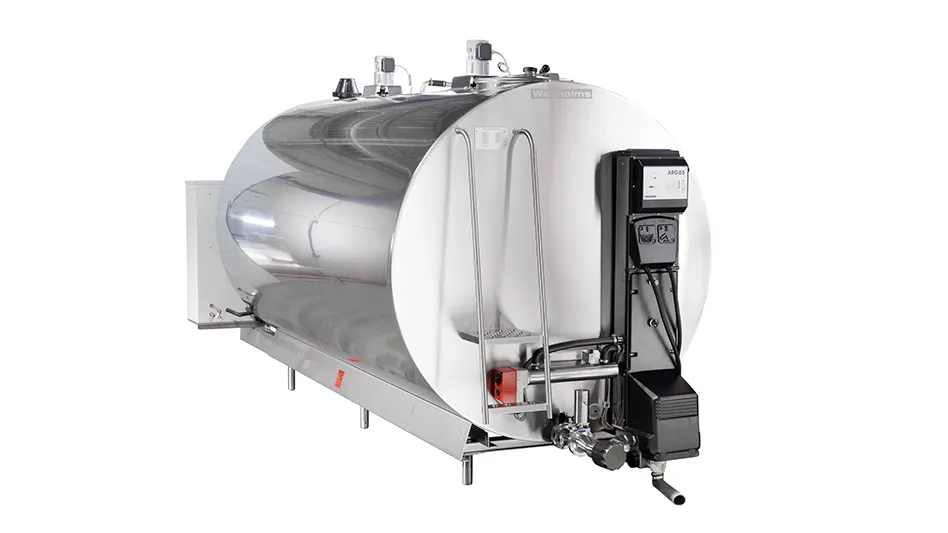
Inadequate pest control in food processing can lead to substantial fines, shutdowns, and widespread illness outbreaks. These types of facilities offer the perfect conditions for rodents, cockroaches, and flies to thrive, allowing them to spread illness through the adulteration of the food supply.
But by learning the habits of these pests, including what they like to eat and where they like to hide, as well as being able to spot the signs of an infestation and knowing when to call in a professional, facility managers can equip themselves with the knowledge needed to keep populations from disrupting operations and affecting the bottom line.
RODENTS. Responsible for spreading many diseases, most notably the plague that killed 25 million people in Europe in the 14th century, rodents present the greatest pest problem in food processing facilities. From fecal matter that can contaminate goods and harbor bacteria such as Salmonella and hantavirus to costly damage to drywall, plumbing, and even electrical wiring due to excessive gnawing, rodents are one pest your facility simply can’t afford to harbor.
Rodents are primarily nocturnal and tend to return to the same food source time after time, following the same pathway between their nest and food. While many prefer to nest in the upper parts of buildings, they also can be found under, in, and around structures, as well as in piles of debris.
When looking for indoor shelter, mice will enter structures through any access point larger than a dime, with rats fitting through holes the size of a quarter.
Signs of an Infestation include:
- Sightings. A female house mouse can give birth to a half dozen babies every three weeks, so if you spot a rodent, it’s likely there are more.
- Droppings. As one of the most common signs, mice alone are capable of producing up to 50 droppings per day.
- Gnaw marks. These can appear on anything from plastic and lead pipes to electrical wiring as rodents chew to access food or water.
- Tracks. Dark grease or dirt marks along walls and floorboards lead to a food source.
- Nests. Shredded paper products, cotton, packing materials, or wall insulation scattered about.
COCKROACHES. Cockroaches are especially common in larger commercial buildings such as food processing plants, restaurants, bakeries, and grocery stores. These pests usually will infest food storage and food preparation areas, as well as boiler rooms, steam tunnels, and basements.
Cockroaches pick up germs on the spines of their legs and bodies as they crawl through decaying matter or sewage and carry these into food or onto food surfaces, spreading at least 33 kinds of bacteria, including E. coli and Salmonella, as well as six kinds of parasitic worms and human pathogens.
In general, cockroaches prefer warm, moist, dark environments, and often enter structures by being brought in on human belongings, coming up from the sewer system, or occasionally, through mass migration from other structures during warm weather.
Signs of an infestation include:
- Sightings. Seeing the fast-moving insects themselves as they are usually fleeing to dark areas.
- Droppings. These are blunt on the ends with ridges on the sides and often mistaken for mouse droppings.
- Egg capsules. About eight mm long, dark-colored, and sometimes glued to a surface near food sources.
- Odor. A musty smell produced by pheromones.
FLIES. Capable of contaminating food and transferring more than 100 pathogens, including malaria, Salmonella, and tuberculosis, common house flies can quickly reproduce in large numbers, leading to large populations within a facility if not identified and effectively controlled.
House flies are usually only active during the day when they will congregate indoors on floors, walls, and ceilings. While they don’t have teeth, flies use their sponging mouthparts to liquefy many solid foods through spitting or regurgitation, and feed on a wide variety of substances such as human food, animal carcasses, and garbage.
In addition to defecating constantly, flies also contaminate food surfaces by spreading disease organisms picked up on their legs and mouths when feeding on trash, feces, and other decaying substances.
Signs of an infestation include:
- Sightings. The presence of the flies themselves, usually near decaying food or garbage.
- Larvae. Flies can be seen crawling out of their breeding material as they pupate.
Buzzing. An audible sound resulting from their two wings beating together.
Proper pest control in food processing rests heavily on the vigilance of facility managers to assess, discern, and act when signs of an infestation are present. Enlisting the help of a pest control professional when an infestation is suspected is crucial, as small problems can quickly become catastrophic nightmares for any facility — large or small.
To determine the best options for a particular pest problem, pest control professionals incorporate inspection, identification, and treatment into a holistic approach known as an integrated pest management (IPM) plan.
The success of an IPM plan hinges on the partnership between facility managers and pest control professionals, as treatments are based on each facility’s unique needs. By knowing the signs and working together, facility managers have the tools needed to stave off costly infestations and keep operations running smoothly.

Explore the August 2018 Issue
Check out more from this issue and find you next story to read.
Latest from Quality Assurance & Food Safety
- FDA Publishes Landmark Final Rule to Enhance the Safety of Agricultural Water
- The Wendy's Company Reports 2023 Corporate Responsibility Progress
- Local Bounti Opens New Controlled Environment Agriculture Facility
- Tröegs Partners with Patagonia Provisions to Introduce Kernza Lager
- Neogen Launches New Molecular Method for Detection of Two Salmonella Serotypes
- Standard Meat Company Appoints Keith Blanks as Chief Commercial Officer
- USDA Finalizes Policy to Protect Consumers from Salmonella in Raw Breaded Stuffed Chicken Products
- Comedian Vanessa Bayer Explores the World of Dairy Farming in ‘Dairy Diaries’




